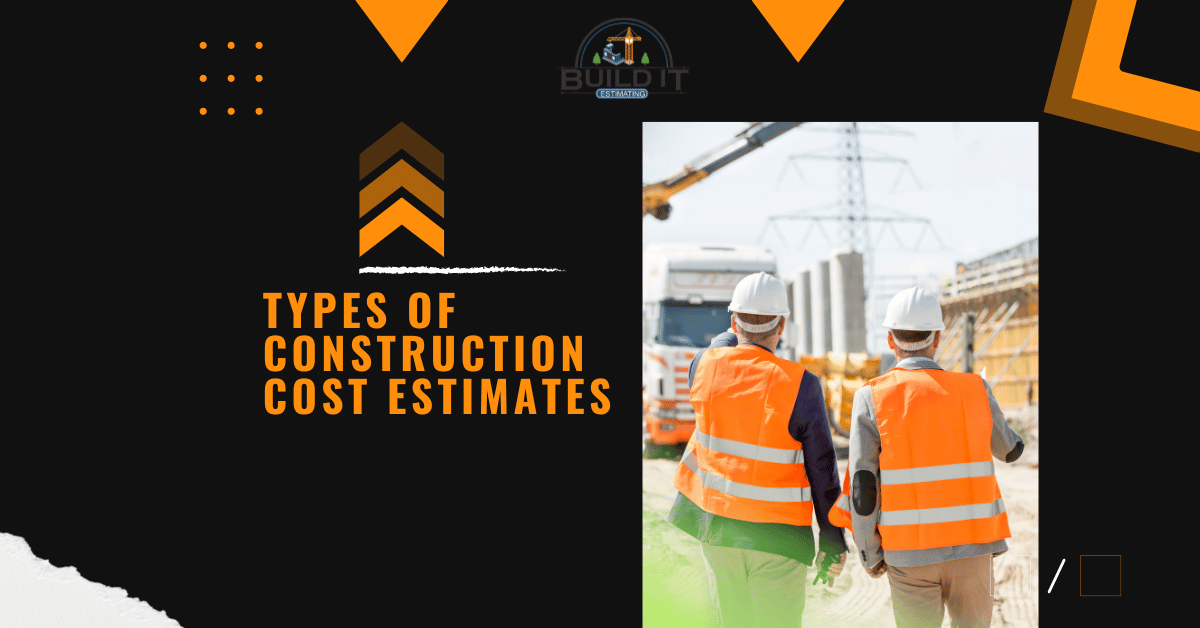Accurate construction cost estimates are the cornerstone of successful project planning and execution. They provide a financial roadmap, ensuring that projects are completed on time and within budget. Understanding the different types of cost estimates is essential for anyone involved in the construction industry, from project managers and contractors to architects and stakeholders. This guide explores the six essential types of construction cost estimates and their significance in ensuring project success.
Preliminary Estimates
Preliminary estimates are the first step in the cost estimation process, providing a rough cost approximation during the project’s conceptual phase. These estimates are essential for evaluating the feasibility of a project and making initial budgetary decisions. Preliminary estimates are typically based on limited information, such as sketches or early design concepts, and therefore have a higher degree of uncertainty.
The purpose of preliminary estimates is to give stakeholders an initial understanding of the project’s potential costs, allowing for informed decision-making early in the planning process. These estimates are useful for securing initial funding, evaluating different design options, and setting preliminary budgets.
Detailed Estimates
Detailed estimates are more comprehensive and accurate, providing a thorough breakdown of all costs associated with a construction project. These estimates are based on detailed project plans, specifications, and comprehensive data. They include costs for materials, labor, equipment, subcontractors, overhead, and profit margins.
The primary purpose of detailed estimates is to provide a precise and reliable cost assessment, ensuring that the project can be completed within the allocated budget. Detailed estimates are used for finalizing project budgets, securing funding, and managing costs throughout the construction process.
Quantity Take-off Estimates
Quantity take-off estimates involve the measurement and listing of all materials required for a construction project. These are critical for determining the exact quantities of materials needed, which directly impacts the overall cost of the project.
The process of creating a quantity take-off estimate involves reviewing project plans and specifications, measuring quantities of materials, and calculating the total cost based on current market prices.
This type of estimate is essential for ensuring that all material requirements are accurately accounted for and that there are no shortages or excesses during construction.
Assembly Estimates
Assembly estimates focus on the cost of assembling various components or systems within a construction project. This type of estimate is useful for projects that involve repetitive tasks or standardized components, such as building prefabricated units or installing HVAC systems.
The benefits of assembly estimates include increased accuracy and efficiency, as they allow for the use of standardized cost data and streamlined estimating processes. Examples of assembly estimates include calculating the cost of installing a set number of windows or constructing a series of modular units.
Unit Cost Estimates
Unit cost estimates break down the project into individual tasks and calculate costs based on standardized unit prices. This method involves assigning a unit cost to each specific task or component, such as the cost per square foot of flooring or the cost per linear foot of piping.
Unit cost estimates are particularly useful for projects with well-defined tasks and standardized pricing data. They provide a straightforward and consistent approach to cost estimation, making it easier to compare costs across different projects and ensure that estimates are accurate and reliable.
Parametric Estimates
Parametric estimates use mathematical models and statistical relationships to estimate costs based on key project parameters. This method involves identifying specific parameters, such as building size, number of floors, or type of materials, and using historical data and statistical analysis to calculate the estimated cost.
Parametric estimates are valuable for their ability to provide quick and reasonably accurate cost estimates based on limited information. They are particularly useful during the early stages of project planning when detailed information may not yet be available. However, the accuracy of parametric estimates depends on the quality of the underlying data and the appropriateness of the chosen parameters.
The Importance of Choosing the Right Estimate Type
Selecting the appropriate type of cost estimate is crucial for ensuring the accuracy and reliability of the project’s financial planning. Different projects and phases of construction may require different types of estimates, depending on the level of detail, accuracy, and information available.
Using the wrong type of estimate can lead to significant cost overruns, project delays, and financial losses. Therefore, understanding the strengths and limitations of each type of estimate is essential for making informed decisions and achieving successful project outcomes.
Common Challenges in Construction Cost Estimation
Despite advances in technology and best practices, construction cost estimation remains a challenging task. Accuracy is a primary concern, as even small errors can lead to significant financial discrepancies. Data management is also a critical issue, as estimators must handle vast amounts of information and ensure that all data is up-to-date and relevant.
Cost variations due to market fluctuations, supply chain disruptions, and changes in project scope can further complicate the estimation process. Estimators must be adept at anticipating and mitigating these challenges to provide reliable and accurate cost estimates.
Best Practices for Accurate Cost Estimation
To achieve accurate and reliable cost estimates, estimators should follow several best practices:
Thorough Documentation: Maintaining detailed records of all assumptions, calculations, and decisions made during the estimation process is essential for transparency and accountability.
Regular Updates: Regularly updating cost data based on current market conditions ensures that estimates remain accurate and relevant.
Stakeholder Communication: Effective communication with project stakeholders helps to ensure that all parties are aligned and that any discrepancies are addressed promptly.
Utilizing Technology: Leveraging modern software tools and technology can enhance accuracy, streamline processes, and reduce the risk of human error.
Case Studies of Successful Cost Estimation
Examining case studies of successful cost estimation can provide valuable insights and lessons learned. These real-world examples illustrate the importance of accuracy, thorough documentation, and effective communication. They also highlight common pitfalls and strategies for overcoming challenges.
For instance, a case study of a large commercial project might showcase how precise estimates helped manage costs and prevent budget overruns. Another example could demonstrate how technology facilitated collaboration and improved estimate accuracy in a residential project.
Future Trends in Construction Cost Estimation
The future of construction cost estimation is shaped by emerging trends and technologies. Artificial intelligence (AI) and machine learning are poised to revolutionize the estimating process, offering predictive analytics and data-driven insights. These technologies can enhance accuracy by identifying patterns and trends that might be overlooked by human estimators.
Sustainability considerations are also becoming increasingly important, with estimators needing to account for eco-friendly materials and practices. As the construction industry continues to evolve, so too will the methods and technologies used in cost estimation, driving greater accuracy, efficiency, and sustainability.
SIX TYPES OF CONSTRUCTION COST ESTIMATES
Understanding the six essential types of construction cost estimates is crucial for anyone involved in the construction industry. From preliminary and detailed estimates to quantity take-off, assembly, unit cost, and parametric estimates, each type serves a unique purpose and provides valuable insights into project costs. By selecting the appropriate estimate type and following best practices, estimators can ensure accurate and reliable cost assessments, contributing to the success of construction projects.
Conclusion
Construction cost estimation is a complex but essential aspect of project planning and execution. By understanding the six types of construction cost estimates and their unique applications, stakeholders can make informed decisions, manage budgets effectively, and ensure project success. The continued evolution of estimating techniques and technologies promises to further enhance the accuracy, efficiency, and sustainability of construction cost estimation in the future.

